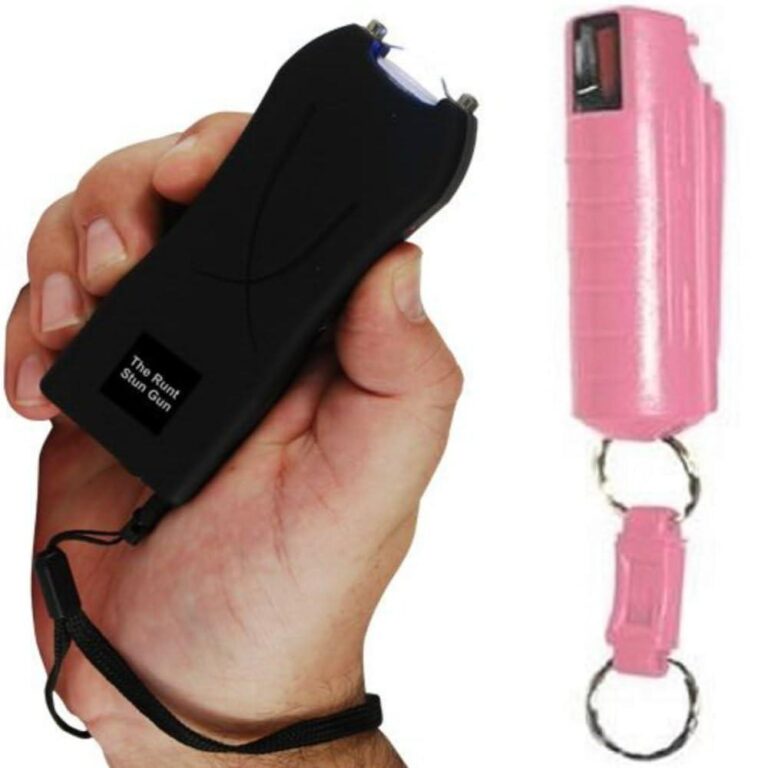Table of Contents
- Effectiveness and Practicality in Real-Life Self-Defense Situations
- Safety Considerations and Legal Implications for Users
- Training Requirements and Skill Development for Optimal Use
- Choosing the Right Self-Defense Method Based on Personal Lifestyle and Environment
- The Way Forward
Effectiveness and Practicality in Real-Life Self-Defense Situations
When it comes to real-world self-defense, practicality and effectiveness are crucial. Stun guns offer an immediate incapacitation method that requires minimal skill, making them accessible to nearly anyone. Their compact size allows for quick deployment, and the electric shock can momentarily disable an attacker, providing a vital window to escape. However, stun guns rely heavily on close proximity and proper contact to be effective, which can be challenging if the assailant wears thick clothing or if there is a struggle involved.
On the other hand, martial arts equip practitioners with not just physical techniques but also crucial awareness and confidence under pressure. The knowledge of strikes, blocks, and escapes can be applied dynamically, regardless of the environment or weapon availability. Some key benefits include:
- Adaptability: Techniques can be modified based on the situation and attacker behavior.
- Non-reliance on tools: Self-defense skills remain effective even if no weapon is available.
- Psychological preparedness: Training builds mental resilience and reduces panic.
Ultimately, the decision between stun guns and martial arts depends on personal preference and circumstances, but blending both can often offer a well-rounded approach to self-protection.
Safety Considerations and Legal Implications for Users
When weighing your options for self-defense, it’s crucial to understand that legal restrictions surrounding stun guns vary widely depending on your location. Some jurisdictions classify stun guns as prohibited weapons, requiring special permits or outright banning their possession. Additionally, even in areas where stun guns are legal, discharging them inappropriately can lead to serious legal consequences, including charges of assault or improper use of force. Being well-informed about local laws not only protects you from potential legal trouble but also ensures that your self-defense choices are responsible and justified.
From a safety perspective, martial arts emphasize discipline, control, and situational awareness, which can often prevent escalation before physical confrontation occurs. However, improper technique or lack of training can increase the risk of injury both to the defender and the attacker. In contrast, stun guns offer a non-lethal means to incapacitate an aggressor quickly, but require familiarity with their operation and limitations under stress. Users should also consider carrying liabilities, possible misuse repercussions, and personal physical capability when choosing between these two methods, ensuring their self-defense approach aligns with both their lifestyle and legal framework.
Training Requirements and Skill Development for Optimal Use
Mastering a stun gun requires a basic understanding of its operations, safety protocols, and legal restrictions. While it doesn’t demand the years of rigorous physical conditioning that martial arts training often involves, users must still develop the confidence and judgment to deploy the device effectively under stress. Regular practice with the stun gun ensures muscle memory for quick activation, proper targeting to maximize impact, and safe handling to avoid accidental discharge. Additionally, awareness of local laws governing stun gun possession and use is crucial to prevent legal complications, making ongoing education an essential part of responsible ownership.
On the other hand, martial arts demand a deeper commitment to continuous physical and mental development. This journey involves honing strength, flexibility, situational awareness, and discipline through consistent training sessions. Martial artists cultivate reflexes and strategic thinking that enable them to respond to threats with precision and adaptability. Moreover, ongoing skill development often includes learning multiple techniques, sparring with partners, and participating in self-defense workshops that refine one’s ability to handle diverse attack scenarios. Together, these elements forge a holistic defense capability that evolves alongside the practitioner’s growth.
- Stun Gun: Quick to learn, requires legal knowledge, and regular handling practice.
- Martial Arts: Demands physical conditioning, mental focus, and ongoing skill refinement.
Choosing the Right Self-Defense Method Based on Personal Lifestyle and Environment
When deciding between a stun gun and martial arts, it’s essential to consider your everyday surroundings and daily routines. For those living in urban environments with high foot traffic, carrying a stun gun can offer a discreet and immediate form of protection without the need for extensive physical engagement. It’s compact, easy to use, and highly effective in incapacitating an attacker quickly. Conversely, individuals in more isolated or rural areas might find martial arts more beneficial, as these skills can be applied even without any external tools, ensuring you’re always prepared regardless of circumstance.
Your lifestyle plays a pivotal role in what self-defense method aligns best with you:
- Active and fitness-oriented: Martial arts not only offer protection but also enhance physical health and confidence.
- Busy schedules or frequent travelers: A stun gun is convenient, easy to carry, and requires minimal maintenance.
- Family environment: Martial arts can be a family activity, promoting safety and well-being for all members.
- Minimal physical interaction preference: A stun gun prevents confrontation and physical struggle, preferred by many.
The Way Forward
In the end, choosing between a stun gun and martial arts for self-defense boils down to personal preference, circumstances, and comfort level. While stun guns offer immediate incapacitation with minimal training, martial arts provide a deeper, more holistic approach that combines physical fitness, confidence, and situational awareness. Both have their merits and drawbacks, but equipping yourself with knowledge and preparation is what truly empowers you to stay safe. Whether you lean toward the quick shock of technology or the disciplined strength of martial arts, the best defense is the one that works for you. Stay informed, stay vigilant, and prioritize your safety above all.Check Our Other Blogs
- StunGun – Your Trusted Source for Stun Guns, Laws, and Self-Defense Tips
- PepperSprayLaws – Your Trusted Resource for Pepper Spray Information
- StunGunLaws – Your Trusted Guide to Stun Gun Legality and Safety





